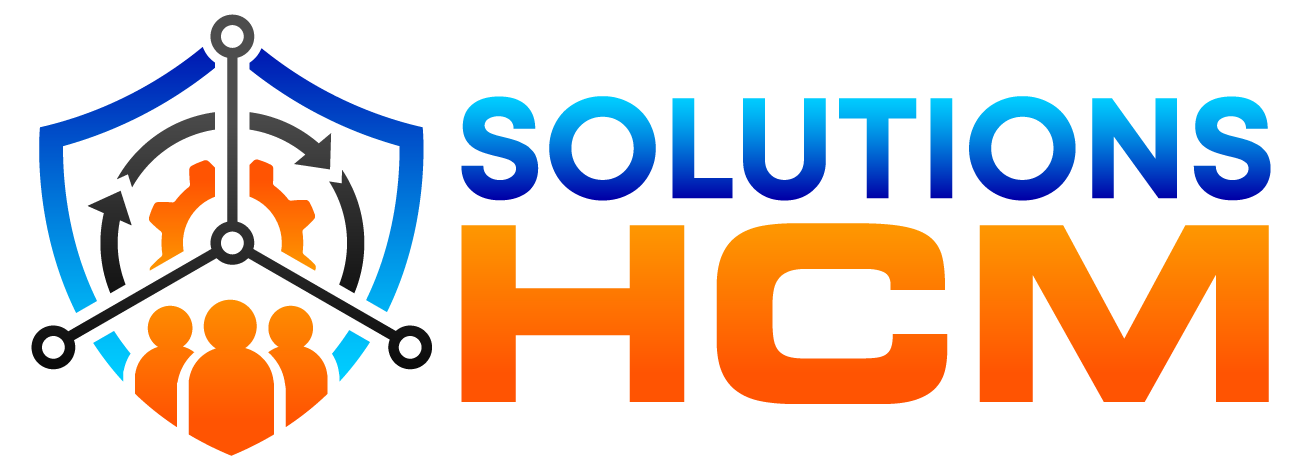
Efficiency, Productivity and Profit: The Triple Impact of Strategic Time and Labor Management
Strategic time and labor management has never been more important in today’s business environment. One of the key tools that can help you achieve this is labor scheduling software with Solutions HCM. This article will explore the benefits of using our dynamic scheduling system, common challenges in workforce scheduling, tips for efficient labor scheduling, and how strategic time and labor management can help you maximize productivity and profits. Let’s explore how Solutions HCM can help you improve productivity and profits with our time and labor management systems.
If you’re considering implementing labor scheduling software, we at Solutions HCM are here to help. We partner with some of the largest providers of labor scheduling software and payroll solutions to help you run your business more efficiently and more profitably.
Benefits of using labor scheduling software
Labor scheduling software offers numerous benefits for businesses of all sizes. First, time management systems streamline the scheduling process, thus eliminating the need for manual scheduling methods such as spreadsheets or paper-based systems. By automating the labor scheduling processes, it is easier to create, modify, and distribute schedules, ensuring that employees are assigned correctly with no conflicts.
Second, labor scheduling software provides real-time visibility and preferences. It allows you to track employee skills, certifications, and training, ensuring that the right number of employees are assigned to the appropriate tasks. This not only improves efficiency but also enhances customer satisfaction. Additionally, labor scheduling software enables you to easily handle shift swaps, time-off requests, and other scheduling changes, reducing administrative burden on managers and HR personnel.
Furthermore, labor scheduling software helps optimize labor costs. It provides insights into labor demand, allowing you to schedule the right number of employees at any given time. By avoiding overstaffing or understaffing, you can minimize labor costs while ensuring that you have enough resources to meet customer demands. Labor scheduling software can help you identify trends and patterns in labor requirements, enabling you to make data-driven decisions when it comes to workforce planning and scheduling.
Common challenges in workforce scheduling
While labor scheduling software offers many benefits, there are also common challenges that businesses face while integrating new processes. One of the main challenges is managing a diverse workforce with different availability and scheduling preferences. Employees may have different work functions and availability, such as full-time and part-time availability. Manual scheduling can be time-consuming and prone to errors, leading to lower workforce quality and morale.
Another challenge is forecasting labor demand accurately. Businesses need to consider factors such as seasonality, peak hours, and varying customer demands when scheduling staff. Without the right tools, and insights, it is challenging to optimize labor allocation and avoid overstaffing or understaffing. This can increase labor costs and decrease customer satisfaction.
Lastly, many businesses struggle with effectively communicating employee schedules to team members. Traditional methods such as posting schedules on bulletin boards or sending emails can be inefficient and can lead to miscommunication. This can result in confusion among employees, missed shifts, and decreased productivity. Labor scheduling software from Solutions HCM solves these challenges by providing a centralized platform for creating, managing and communicating schedules, ensuring employees have easy access to up-to-date information.
Tips for efficient labor scheduling
Efficient labor scheduling is crucial for maximizing productivity and profits. Here are some tips to help you optimize your labor scheduling process:
- Analyze historical data: Use labor scheduling to analyze historical data and identify trends and patterns in labor demand. This will help you make more accurate forecasts and create schedules that align with your business needs.
- Consider employee preferences: Consider employee preferences when creating schedules. Labor Scheduling software allows you to track employee availability, shift preferences, and time-off requests, making it easier to accommodate their needs and improve employee satisfaction.
- Implement flexible scheduling options: Offer flexible scheduling options such as shift swaps, split shifts, or compressed workweeks. This can improve work-life balance and increase morale, leading to higher productivity and lower turnover rates.
- Automate scheduling tasks: Leverage the automation capabilities of labor scheduling software to streamline repetitive tasks such as shift assignments, time-off approvals, and schedule distribution. This will free up time for managers to focus on more strategies activities.
- Regularly review and adjust schedules: Continuously monitor and evaluate the effectiveness of your schedules. Solicit feedback from employees and make necessary adjustments to ensure optimal staffing and employee satisfaction.
By following these tips, you can create efficient schedules that meet your business needs while considering employee preferences and optimizing labor costs.
Features to consider in labor scheduling software
When choosing labor scheduling software for your business, we at Solutions HCM think it’s important to consider the following key features:
- Intuitive user interface: Look for software with a high-user friendly interface that is easy to navigate and understand. This will minimize the learning curve for managers and employees, resulting in smooth adoption and usage.
- Real-time data: Ensure that the software provides real-time visibility into employee availability, time-off requests, and other scheduling details. Real-time data allows for quick decision-making and adjustments when needed.
- Integration capabilities: Consider whether the software can integrate with other business tools such as payroll systems, time and attendance systems, or HR management software. Integration eliminates the need for manual data entry and ensures data consistency across systems.
- Reporting and analytics: Look for software that offered robust reporting and analytics capabilities. This will allow you to track key metrics such as labor costs, employee overtime, and employee productivity. Insights from these reports can help you make informed decisions and identify areas for improvement.
- Mobile accessibility: In today’s mobile workforce, it’s important to choose software the is accessible on mobile devices. This allows managers and employees to access schedules, make changes, and communicate on the go, improving flexibility and responsiveness.
By considering these features, you can select labor scheduling software that best meets your business needs and supports efficient workforce management.
How labor scheduling software maximizes productivity and profits
Labor scheduling software plays a crucial role in maximizing productivity and profits enabling businesses to:
- Optimize labor allocation: By accurately forecasting labor demand and scheduling the right number of employees, businesses can avoid overstaffing or understaffing. This ensures that labor resources are utilized efficiently, leading to increased productivity and cost savings.
- Improve employee satisfaction: Labor scheduling software allows businesses to consider employee preferences and accommodate their scheduling needs. This leads to higher employee satisfaction, which in turn increases productivity and reduces overall turnover rates.
- Reduce scheduling conflicts: Labor scheduling software helps prevent scheduling conflicts such as double-booked shifts or overlapping time requests. By minimizing these conflicts, businesses can avoid disruptions and maintain smooth operations.
- Enhance communication: labor scheduling software helps provides a centralized platform for communicating schedules, shift changes, and other important information to employees. This improves communication, reduces miscommunication, and ensures that everyone is on the same page.
- Enable data-driven decision-making: With labor scheduling software, businesses have access to real-time data and insights. This allows for data-driven decision-making when it comes to labor planning, resource allocation and productivity optimization. By making informed decisions, businesses can maximize profits and stay ahead of competition.
Choosing the right labor scheduling software for your business
When choosing the right labor scheduling software for your business, it’s important to consider your unique needs and requirements. Here are some key factors to consider:
- Scalability: Ensure that the software can accommodate your business’s growth and handle the number of employees and locations you have. Scalability is crucial to future-proof your investment.
- Customization: Look for software that allows you to customize scheduling rules, shift types, and other parameters to align with your business processes. This ensures that the software fits your specific requirements.
- Customer Support: Evaluate the level of customer support offered by the software provider. Responsiveness and knowledgeable customer support can make a significant difference in the implementation and ongoing usage of the software.
- Cost-effectiveness: Consider the pricing structure of the software, including any upfront costs, licensing fees, or ongoing maintenance costs. Evaluate the return on investment based on the expected benefits and cost savings.
- User feedback and reviews: Research user feedback and reviews of the software to get insights from other businesses that have implemented it. This can provide valuable information about the software’s usability, reliability, and Customer satisfaction.
Integrating labor scheduling software with other business tools
To further enhance the benefits of labor scheduling software, consider integrating it with other business tools such as payroll systems, time and attendance systems, or HR management software. Integration eliminates the need for manual data entry, reduces errors, and ensures data consistency across systems.
For example, integrating labor scheduling software with a payroll system allows for seamless transfer of worked hours, time-off requests, and other relevant data. This streamlines the payroll process and reduces administrative overhead. Integration with time and attendance systems provides accurate tracking of employee hours and attendance, enabling more precise labor cost calculations.
Additionally, integrating labor scheduling software with HR management software allows for a holistic view of employee data. This enables better workforce planning and decision-making, as well as improved compliance with labor regulations and policies.
When considering integration options, it’s important to evaluate the compatibility and ease of the integration between labor scheduling software and your existing business tools. Consult with us at Solutions HCM today to ensure a smooth integration process.
Conclusion
Efficiently managing your workforce is crucial for maximizing productivity and profits. Labor scheduling software offers numerous benefits, including streamlined scheduling processes, real-time visibility into employee availability, and optimized labor allocation. By following tips for efficient labor scheduling, considering key features in software selection, and leveraging the integration capabilities, businesses can further enhance productivity and profitability.
Contact us today at Solutions HCM to help you get starting implementing time-saving labor scheduling solutions today.
.png) 615 750 5213
615 750 5213 Client Login
Client Login
 Blog
Blog



